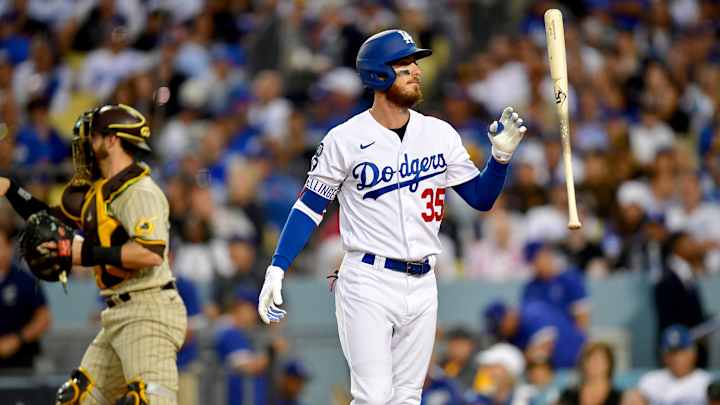How the Chicago Cubs Can Fix Cody Bellinger

In this story:
The Chicago Cubs just signed a player with a .654 OPS to the second-highest free agent deal in club history for a position player, by AAV.
If you saw Cody Bellinger stats over the last two seasons (.193/.256/.355, 9 OAA in CF), you wouldn't be wrong to assume the Cubs were moving for Kevin Kiermaier-lite, a slight, lithe center fielder who could steal a few bags and knock some singles.
But we all know what Bellinger is capable of.
Across his first three seasons, he hit 111 home run on an OPS+ of 144. He's a veritable slugger capable of playing Gold Glove defense at one of the most difficult positions on the diamond.
So what happened, how did a 23-year-old old turn from an MVP-winner into sub-replacement level player in just two years?
Oft-ascribed to Bellinger's downfall was the injury he suffered during 2020's playoffs. In an embarrassing episode, Bellinger over-celebrated a home run, dislocating his shoulder in the process.
But the 25-year-old Arizona-native had already begun to decline by then. His OPS had already dropped an astounding 246 points from 2019 to 2020, and Bellinger had suffered dislocated shoulders before, even avoiding the injured list.
Sure, some that deflation could be ascribed to a small sample size, after all, Bellinger only had 243 plate appearances in 2020, and his BABIP had dropped precipitously from .302 to .245.
But after 2021, it was an anomaly no more. His OPS had fallen to .542, and that couldn't be explained away by BABIP, though his year total was an unfortunate .196. It was a similar story in 2022 when his OPS was .654 and his BABIP stayed well below his career average.
We have uncovered one of the great variable changes in Bellinger late-career. Pre-2020, it was .305, 2020 and beyond, it has been .235.
Unconsciously, this may have hindered the former-MVP. He was stilling hitting the ball hard, and at good launch angles. The quality of his contact was still good, if not great.
This may have impacted the other variable which has changed in Bellinger's decline, his K%. Even in 2020 it was 17.3%. By 2022, is was 27.3%.
However, there underlying statistics even further that give us insight into why his K% began to rise. In 2019 Belling swung at only 26.8% of pitches outside the strikezone, that rose slightly in 2020 to 29.9%. By 2021, it had risen to 35.2% O-Swing%, and plateaued at 34.5%.
From a statistical standpoint, it seems like the storyline for Belling is as follows:
- 2020: Unlucky down-year due to BABIP, and slight regression
- 2020 Postseason: Bellinger suffers shoulder injury
- 2021: Bellinger begins pressing to make up for apparently lack of improvement, only furthers his slump
- 2022: High swing-rate is new normal, BABIP still has returned to pre-2020 standards, so coupled with a high-swing rate, it provides for disastrous results.
If the Cubs impress one thing on Bellinger this spring, it's that he must be more disciplined at the plate. His hits will begin to fall as his sample size increased. But he needs to put more balls in play to make that happen.
More From SI's Inside The Cubs
- Could Mike Trout Request a Trade to the Chicago Cubs?
- Did David Robertson Net the Cubs a Future Star in Ben Brown?
- Hoerner is the Cubs Shortstop of the Future
- Cubs Could Give Canario a Shot in September
- Could the Cubs Land Trea Turner in the Offseason?
- Chicago Cubs Have a New Top Prospect in Their Rankings
- Is This Top Cubs Prospect Destined for the Mound at Wrigley?
- Steele Offers Glimpse Into Future of Cubs Rotation
- Do the Chicago Cubs Have the National League's Best Bullpen?
- Can Christopher Morel be a Long-Term Solution in Center Field?
Make sure to follow Inside the Cubs on Twitter!

Ben Silver is deputy editor for Inside the Cubs. A graduate of Boston University, Ben formerly covered the Philadelphia Phillies for PhilliesNation.com. Follow him on Twitter @BenHSilver.